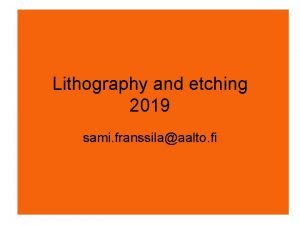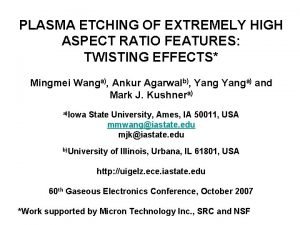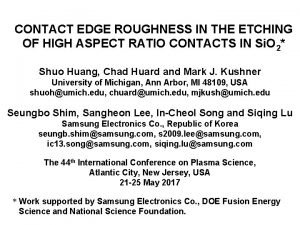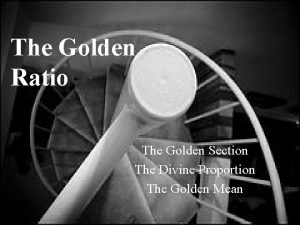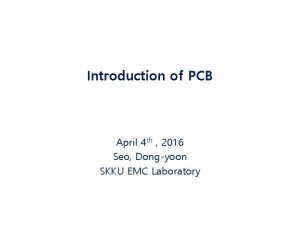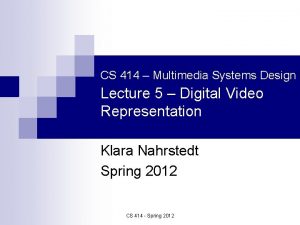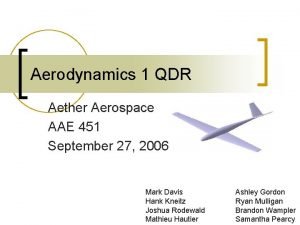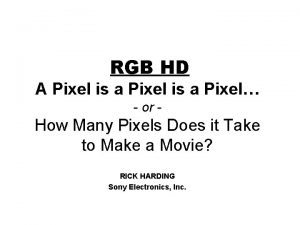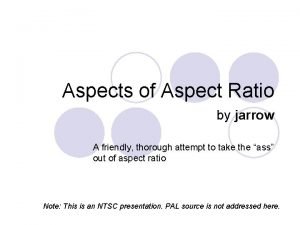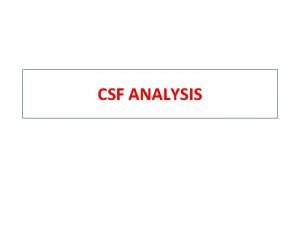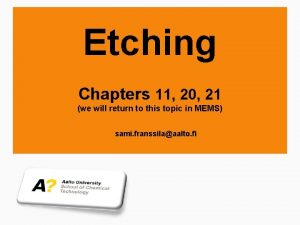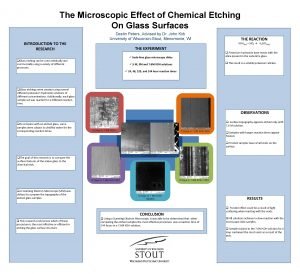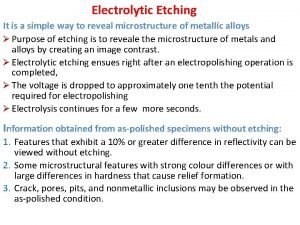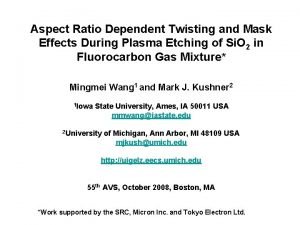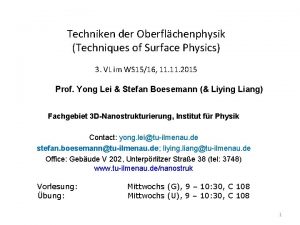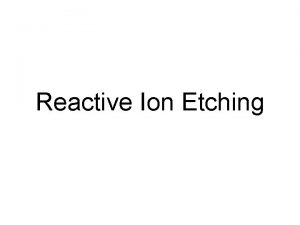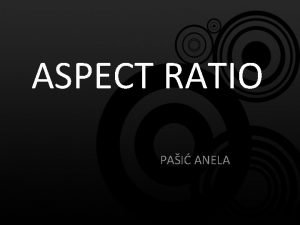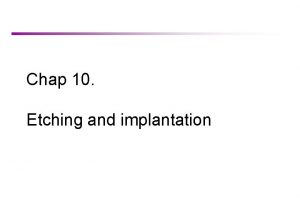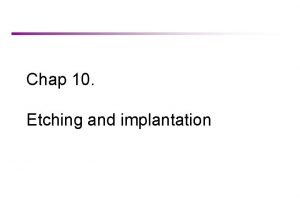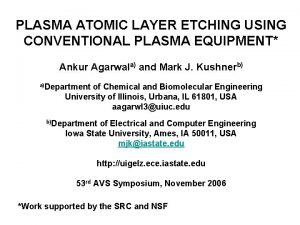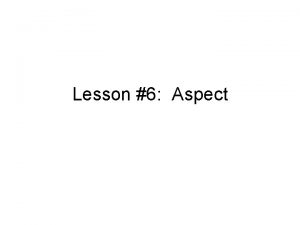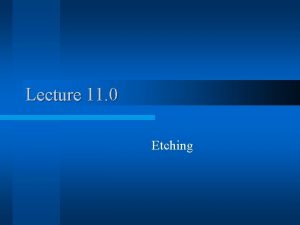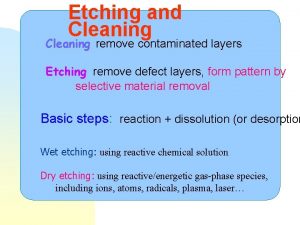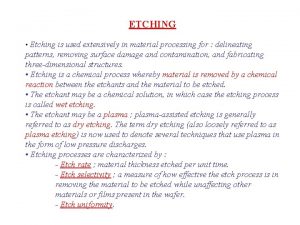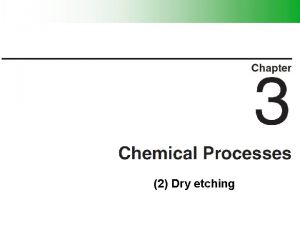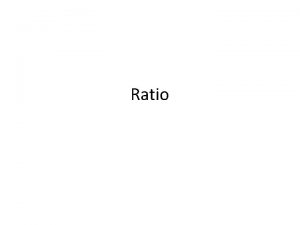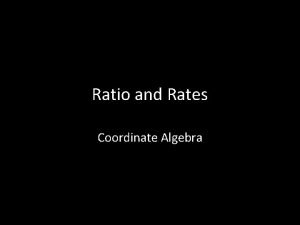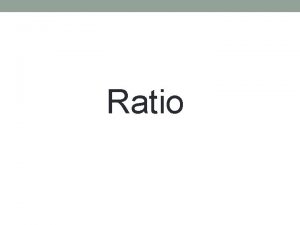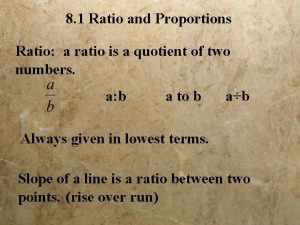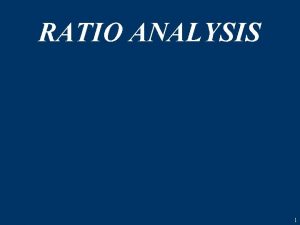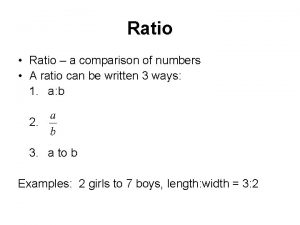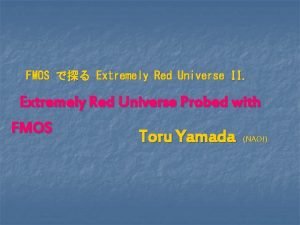PLASMA ETCHING OF EXTREMELY HIGH ASPECT RATIO FEATURES



























- Slides: 27

PLASMA ETCHING OF EXTREMELY HIGH ASPECT RATIO FEATURES: TWISTING EFFECTS* Mingmei Wanga), Ankur Agarwalb), Yanga) and Mark J. Kushnera) a)Iowa State University, Ames, IA 50011, USA mmwang@iastate. edu mjk@iastate. edu b)University of Illinois, Urbana, IL 61801, USA http: //uigelz. ece. iastate. edu 60 th Gaseous Electronics Conference, October 2007 *Work supported by Micron Technology Inc. , SRC and NSF

AGENDA · High Aspect Ratio Contact (HARC) Etching · Approach and Methodology · Charging of features · Fluorocarbon etching of HARC · Si. O 2 -over-Si etching · Potential · Effect of open field · Concluding Remarks MINGMEI_GEC 07_AGENDA Iowa State University Optical and Discharge Physics

HARC ETCHING: ISSUES · As aspect ratio (AR) of features increases, complexity of plasma etching increases. · Aspect Ratio Dependent Etching · Etch rate decreases with increasing AR. · Charging of features due to ion and electron bombardment. · Electric field variations affect ion trajectories; deviation from ideal profile. · Non-uniform ion flux despite uniform bulk plasma. · As AR increases, the cross-sectional area of each via is smaller. · Increasingly random nature of incident ions and radicals. MINGMEI_GEC 07_01 Ref: Micron Technology, Inc. Iowa State University Optical and Discharge Physics

OBJECTIVES AND APPROACH · Objectives · Computationally investigate consequences of charging of high aspect ratio features in Si. O 2. · Approach · Reactor scale: Hybrid Plasma Equipment Model. · Feature scale: Monte Carlo Feature Profile Model. · Poisson’s equation is solved for electric potentials. · Acceleration of ions and electrons due to electric fields in feature. · Dissipation of charge through material conductivity. MINGMEI_GEC 07_02 Iowa State University Optical and Discharge Physics

HYBRID PLASMA EQUIPMENT MODEL (HPEM) · Electromagnetics Module: Antenna generated electric and magnetic fields · Electron Energy Transport Module: Beam and bulk generated sources and transport coefficients. · Fluid Kinetics Module: Electron and Heavy Particle Transport, Poisson’s equation · Plasma Chemistry Monte Carlo Module: · Ion and Neutral Energy and Angular Distributions · Fluxes for feature profile model MINGMEI_GEC 07_04 Iowa State University Optical and Discharge Physics

MONTE CARLO FEATURE PROFILE MODEL · Monte Carlo techniques address plasma surface interactions and evolution of surface morphology and profiles. · Inputs: · Initial material mesh · Surface reaction mechanism · Ion and neutral energy and angular distributions. · Ion and radical fluxes at selected wafer locations. · Maxwellian electron fluxes with Lambertian distribution · Fluxes and distributions from HPEM. MINGMEI_GEC 07_05 Iowa State University Optical and Discharge Physics

MCFPM: CHARGING ALGORITHMS · The electric potential is solved using the method of Successive Over Relaxation (SOR). · Large mesh sizes pose computational challenges to solve for potential after launch of each particle. · Electric field is being updated after the launch of every 30 charged particles. Charged particle Mask + Si. O 2 · Particles are a few nm on a side. · Total particles launched (ions and radicals): 150, 000 -300, 000. · The charge of pseudo-particles mesh is adjusted to account for finite sized particles. MINGMEI_GEC 07_03 - - + + + + + Si Iowa State University Optical and Discharge Physics

FLUOROCARBON PLASMA ETCHING OF Si. O 2/Si · CFx radicals produce polymeric passivation layers which regulate delivery of precursors and activation energy. · Chemisorption of CFx produces a complex at the oxide-polymer interface · Low energy ion activation of the complex produces polymer. · Polymer complex sputtered by energetic ions etching. · As Si. O 2 consumes the polymer, thicker layers on Si slow etch rates enabling selectivity. MINGMEI_GEC 07_06 Iowa State University Optical and Discharge Physics

FLUOROCARBON ETCH OF HARC · Dual frequency capacitivelycoupled (CCP) reactor geometry. · Base conditions: · Ar/C 4 F 8/O 2 = 80/15/5, 300 sccm · 40 m. Torr · 500 W at 25 MHz · 4000 W at 10 MHz · Low frequency: Substrate High Frequency: Showerhead MINGMEI_GEC 07_07 Iowa State University Optical and Discharge Physics

REACTANT FLUXES · 10 m. Torr, HF 500 W, LF 4 k. W, Ar/C 4 F 8/O 2 = 80/15/5, 300 sccm · Dominant Ions: Ar+, CF 2+, C 2 F 4+, CF+ · Dominant Neutrals: CF 2, C 2 F 4, CF 3, F · Polymer clearing fluxes · O = 3 1016 cm-2. s-1 · O+ = 3 1014 cm-2. s-1 MINGMEI_GEC 07_08 Iowa State University Optical and Discharge Physics

ION ENERGY ANGULAR DISTRIBUTIONS (IEADs) · IEADs for sum of all ions. · Peak in ion energy increase with increasing bias power. · High ion energies required for etching of HAR features. · Narrow angular distribution reduce sidewall impacts. · 10 m. Torr, Ar/C 4 F 8/O 2 = 80/15/5, 300 sccm, LF 10 MHz, HF 500 W. MINGMEI_GEC 07_09 Iowa State University Optical and Discharge Physics

Si. O 2 -over-Si HARC ETCH: NO CHARGING · Etch profile evolution without charging. · Etch rate higher at higher bias powers owing to high ion energies. · No charging: · Generally straight profiles. · High ion energies low polymer coverages. · Some evidence of randomness due to small contact area · 10 m. Torr, Ar/C 4 F 8/O 2 = 80/15/5, 300 sccm, 10 MHz, HF 500 W. Aspect Ratio = 1: 10 MINGMEI_GEC 07_10 Iowa State University Optical and Discharge Physics

Si. O 2 -over-Si HARC ETCH: EFFECT OF CHARGING · Charging effects are considered: · Charge buildup on polymer affects plasma potential. · Ion trajectories influenced by electric-field. · Electrons neutralize charge deep in trench. · Lower ion energies (due to buildup of charge) · Lower etch rates. · Deviation from “ideal” anisotropic etch profiles. · 10 m. Torr, Ar/C 4 F 8/O 2 = 80/15/5, 300 sccm, 10 MHz, HF 500 W. Animation Slide Aspect Ratio = 1: 10 MINGMEI_GEC 07_11 a Iowa State University Optical and Discharge Physics

Si. O 2 -over-Si HARC ETCH: EFFECT OF CHARGING · Charging effects are considered: · Charge buildup on polymer affects plasma potential. · Ion trajectories influenced by electric-field. · Electrons neutralize charge deep in trench. · Lower ion energies (due to buildup of charge) · Lower etch rates. · Deviation from “ideal” anisotropic etch profiles. · 10 m. Torr, Ar/C 4 F 8/O 2 = 80/15/5, 300 sccm, 10 MHz, HF 500 W. Aspect Ratio = 1: 10 MINGMEI_GEC 07_11 b Iowa State University Optical and Discharge Physics

Si. O 2/Si HARC ETCH: PLASMA POTENTIAL Max Min 213 V 116 V 151 V 110 V · Charge deposition on polymer affects plasma potential. -5 -3 -6 -4 · Small depths: · Electrons effectively neutralize charge buildup. · Potential essentially maintained at zero. · Large depths: · Trapping of charge in polymer perturbs ion trajectories. · Electrons are “pulled” into bottom of trench by large positive potential and neutralizes. AR = 1: 10 Increasing Power MINGMEI_GEC 07_12 a Animation Slide -6 0 213 Iowa State University Optical and Discharge Physics

Si. O 2/Si HARC ETCH: PLASMA POTENTIAL Max Min 213 V 116 V 151 V 110 V · Charge deposition on polymer affects plasma potential. -5 -3 -6 -4 · Small depths: · Electrons effectively neutralize charge buildup. · Potential essentially maintained at zero. · Large depths: · Trapping of charge in polymer perturbs ion trajectories. · Electrons are “pulled” into bottom of trench by large positive potential and neutralizes. AR = 1: 10 Increasing Power MINGMEI_GEC 07_12 b -6 0 213 Iowa State University Optical and Discharge Physics

Si. O 2 -over-Si HARC ETCH: RANDOMNESS? · Monte Carlo modeling utilizes random number generator to simulate a physical process. · Different seed numbers · All other conditions are same. · Is it reproducible? · No charging effects: · Etch profiles vary little · Anisotropic etch · No anomalies observed · 10 m. Torr, Ar/C 4 F 8/O 2 = 80/15/5, 300 sccm, LF 4 k. W, HF 500 W. Different seed numbers Aspect Ratio = 1: 10 MINGMEI_GEC 07_13 Iowa State University Optical and Discharge Physics

Si. O 2/Si HARC ETCH: RANDOMNESS OF CHARGING? · Different seed numbers · All other conditions are same. · Is it reproducible? · Charging effects: · Stochastic nature of incident ion fluxes reflected in profiles. · Twisting observed · Etch direction shifts which reinforces anomoly. · Some unphysical behavior also observed (last trench) Different seed numbers · 10 m. Torr, Ar/C 4 F 8/O 2 = 80/15/5, 300 sccm, LF 4 k. W, HF 500 W. Aspect Ratio = 1: 10 MINGMEI_GEC 07_14 Iowa State University Optical and Discharge Physics

Si. O 2/Si HARC ETCH: RANDOMNESS OF CHARGING? · 6 Trenches receiving “same fluxes. · Stochastic nature of fluxes produces random twisting. · Similar behavior observed experimentally. · 10 m. Torr, Ar/C 4 F 8/O 2 = 80/15/5, 300 sccm, LF 4 k. W, HF 500 W. Ref: Micron Technology, Inc. Aspect Ratio = 1: 10 MINGMEI_GEC 07_15 Iowa State University Optical and Discharge Physics

EFFECT OF OPEN FIELD: NO CHARGING · 4 trenches followed by a “plasma-only” region with hard mask. · Open field has large sidewall polymerization. · Charging not considered · Trenches have some randomness in profiles owing to non-uniform ion fluxes. · No effect due to plasma-only region. Aspect Ratio = 1: 10 MINGMEI_GEC 07_16 a Animation Slide Iowa State University Optical and Discharge Physics

EFFECT OF OPEN FIELD: NO CHARGING · 4 trenches followed by a “plasma-only” region with hard mask. I II · Open field has large sidewall polymerization. · Charging not considered · Trenches have some randomness in profiles owing to non-uniform ion fluxes. III Aspect Ratio = 1: 10 MINGMEI_GEC 07_16 b IV · No effect due to plasma-only region. Iowa State University Optical and Discharge Physics

EFFECT OF OPEN FIELD: EFFECT OF CHARGING · Open field can impact etch of adjacent trenches by trapping of charge in polymer. · Transverse electric fields from external charge significantly affects adjacent trenches. · Inner trenches less affected by charging. · 10 m. Torr, Ar/C 4 F 8/O 2 = 80/15/5, 300 sccm, LF 4 k. W, HF 500 W. Animation Slide Aspect Ratio = 1: 10 MINGMEI_GEC 07_17 a Iowa State University Optical and Discharge Physics

EFFECT OF OPEN FIELD: EFFECT OF CHARGING I II · Open field can impact etch of adjacent trenches by trapping of charge in polymer. · Transverse electric fields from external charge significantly affects adjacent trenches. · Inner trenches less affected by charging. · 10 m. Torr, Ar/C 4 F 8/O 2 = 80/15/5, III Aspect Ratio = 1: 10 MINGMEI_GEC 07_17 b IV 300 sccm, LF 4 k. W, HF 500 W. Iowa State University Optical and Discharge Physics

OPEN FIELD EFFECT ON CHARGING · Open field impacts adjacent trenches by transverse electric field from trapped charged in polymer. I · Isolating open field by making spacer of Si. O 2 thicker reduces transverse fields and perturbation of etch profiles. · Smaller deviation for the adjacent trench. II · Note effect of stochastic ion fluxes in second trench. · 10 m. Torr, Ar/C 4 F 8/O 2 = 80/15/5, 300 sccm, LF 4 k. W, HF 500 W. MINGMEI_GEC 07_18 Aspect Ratio = 1: 10 Iowa State University Optical and Discharge Physics

COMPUTATIONAL ASPECTS: DISSIPATION OF CHARGE · Dissipation of charge accounted for through material conductivity · I: Static charge · II: Only electron charges move · III: Both ion and electron charges move · Positive charges inside materials leads to high potentials inside the trench · Lower ion energies polymer deposition · Etch stop observed · 10 m. Torr, Ar/C 4 F 8/O 2 = 80/15/5, 300 sccm, LF 4 k. W, HF 500 W. MINGMEI_GEC 07_20 Aspect Ratio = 1: 10 Iowa State University Optical and Discharge Physics

ELECTRIC FIELDS: BOUNDARY CONDITIONS · Boundary conditions for Poisson’s equation: Zero potential at mesh boundaries. · Both electron and ion charges move · Small mesh: · Unphysical high gradients in fields · Leads to etch stops · Wide mesh: · Gradients in fields relaxed · Etch progresses to completion · Higher conductivity less effect of charging · 10 m. Torr, Ar/C 4 F 8/O 2 = 80/15/5, 300 sccm, LF 4 k. W, HF 500 W. MINGMEI_GEC 07_21 Aspect Ratio = 1: 10 Iowa State University Optical and Discharge Physics

CONCLUDING REMARKS · Etching of high aspect ratio contacts (HARC) has been computationally investigated in fluorocarbon plasma. · Charging of features has been included to investigate anomalies such as twisting observed during etching of HARCs. · Charge buildup in/on polymer layer decreases etch rates and deviates the etching profile. · Ultimately a stochastic process for small features. · Various factors affect etching profiles: · Special structures like open field. · High energy ions may mitigate the effect of charging. · Charge dissipation due to material conductivity. MINGMEI_GEC 07_22 Iowa State University Optical and Discharge Physics
 Undercut etching
Undercut etching Wet etching vs dry etching
Wet etching vs dry etching High aspect ratio contact
High aspect ratio contact High aspect ratio contact
High aspect ratio contact Le texte descriptif
Le texte descriptif Golden ratio 51 degrees
Golden ratio 51 degrees Aspect ratio in pcb
Aspect ratio in pcb Pixel aspect ratio
Pixel aspect ratio Aspect ratio equation
Aspect ratio equation Maximum lift coefficient formula
Maximum lift coefficient formula 16:9 test pattern
16:9 test pattern 2048 x 1556 aspect ratio
2048 x 1556 aspect ratio Aspect ratio worksheet
Aspect ratio worksheet Dividing in a given ratio worksheet
Dividing in a given ratio worksheet Canted framing
Canted framing 16:9 in pixels
16:9 in pixels Csf analysis
Csf analysis How to restore serial numbers by acid etching
How to restore serial numbers by acid etching Rie
Rie Etching cleaning process
Etching cleaning process The use of acid to etch the obliterated serial number
The use of acid to etch the obliterated serial number Scratchboard etching
Scratchboard etching Chemical etching glass
Chemical etching glass Nerolac paints price 20 liter
Nerolac paints price 20 liter Electrolytic etching
Electrolytic etching Harc etch
Harc etch Ion etching
Ion etching Rie
Rie

